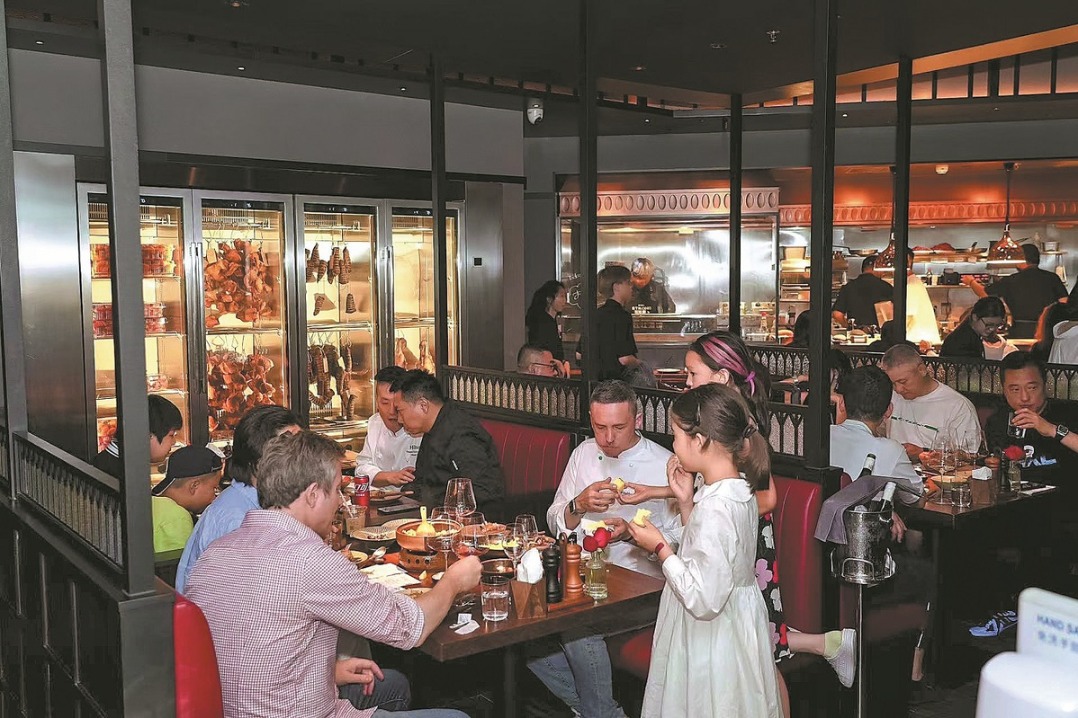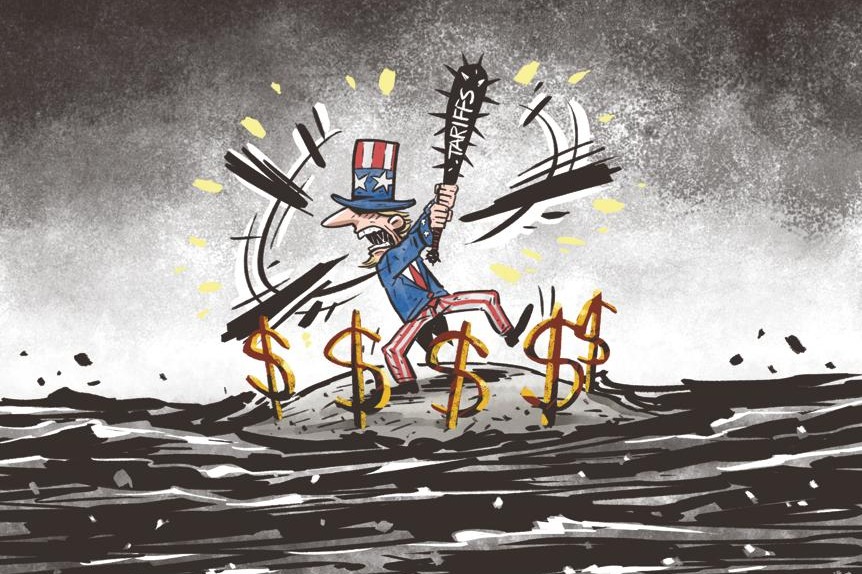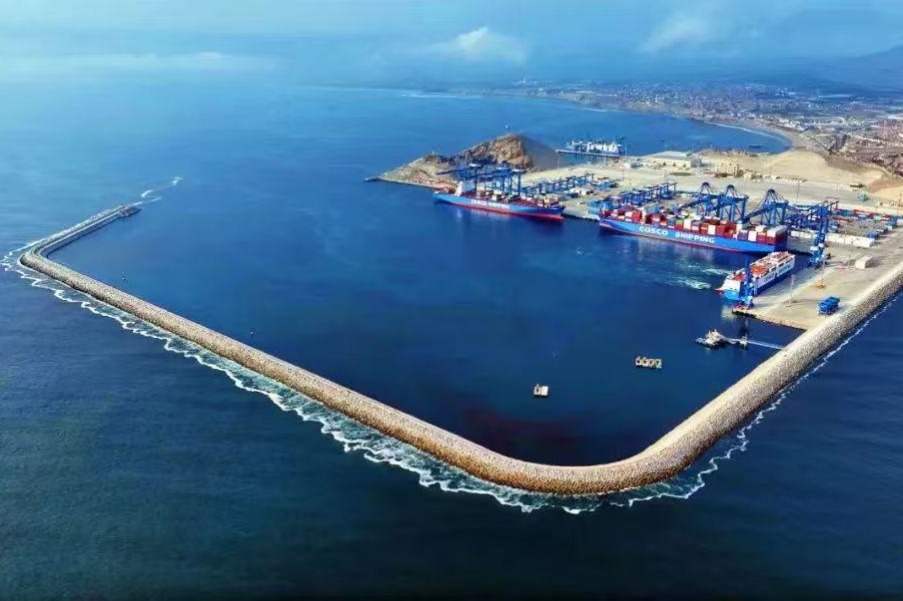China, CEE need to tap more potential in 2025


China proposed the high-quality Belt and Road Initiative for tangible win-win cooperation between participants and to face challenges together at a time when the world was undergoing drastic changes and facing major challenges. Central and Eastern European countries, lying between Asia and Europe, are important participants in this initiative.
The CEE countries have set models of hard connectivity of infrastructure, soft connectivity of institutions and rules, and people-to-people bonds in the BRI, and act as a lever of stability in China-Europe relations.
An important factor in China-CEE cooperation is to recognize the differences between the two sides. Differences exist among countries in Eastern and Western Europe, in old and new Europe, as well as among the CEE countries.
At the 10th high-level symposium of Think Tanks of China and CEE countries in Beijing on Nov 29, Hungarian Prime Minister Viktor Orban's political director Balazs Orban said that the"16 plus 1" cooperation framework between China and CEE countries has changed into"7 plus 7 plus 1", with some countries viewing deepening of relations with China as a risk and others seeing in it opportunities.
European Union countries, including CEE countries, have varied economic goals and geopolitical positions because of which they hold different attitudes toward China. For instance, Poland supports the tariffs that the European Union has imposed on Chinese electric vehicles in order to safeguard its traditional auto industry and auto part producers, while Hungary and Serbia see deeper cooperation with China on EVs as beneficial for their countries and clean energy transition.
Additionally, CEE countries that rely heavily on the US for security, are limiting cooperation with China in high-tech, infrastructure and cultural exchanges. Understanding the internal complexity will help China better cooperate with CEE countries.
China and CEE countries can avoid and address misunderstandings through active dialogue and deepened mutual understanding.
European countries' perception of China has been increasingly influenced by the US-led West. When media outlets in CEE countries were privatized, they received foreign capital, in which the US had a dominant role. Therefore, people in CEE countries are fed misinformation through media reports and stereotyped opinion pieces that portray China negatively. Besides, the West's Euro-centric and civilization conflict theory hinder people from understanding or communicating with China.
The Global Civilization Initiative that China has proposed highlights respect for diverse civilizations and promotes cultural exchanges. Face-to-face dialogue and more mutual understanding can help China and CEE countries take the first step to dispel misconceptions.
Although the two sides have seen significant hard connectivity of infrastructure such as the Hungary-Serbia railway and the Peljesac Bridge in Croatia, differences in standards and market access with the EU, and the impacts of the Russia-Ukraine conflict have caused hindrances for hard connectivity cooperation in the region.
In the future, soft connectivity of institutions and rules, and people-to-people bonds may become a major driver of China-CEEC cooperation based on growing consensus on economic cooperation, cultural exchanges and multilateralism.
To enhance soft connectivity, China and CEE countries need to find solutions to cope with political impacts and seek common interests.
The CEE countries need a more consistent China policy as the EU defines China as a "partner, competitor, and systemic rival". It is difficult to make a partner a competitor and rival at the same time. To promote cooperation, China should cooperate with CEE countries in multilateral frameworks, and the CEE countries should treat China as a partner rather than a rival.
Incoming US president-elect Donald Trump is likely to pull the US out of multilateral mechanisms, particularly climate forums. However, addressing climate change is a global concern. If the US withdraws from global climate governance, China and the CEE countries can continue cooperation and find new common ground.
The high tariff policies Trump has threatened — 60 percent on Chinese imports and 10-20 percent on imports from the EU — will lead to global economic slowdown and inflation irrespective of whether or not they solve the US' economic problems.
Seeking investment and project cooperation is important for CEE countries, especially when many of them are facing similar energy crises and high inflation while their economic development lags behind that of Western European countries. Since China has the willingness to expand openness and international cooperation, strengthening economic ties between China and CEE countries can help counter economic downturns.
Sustainable people-to-people exchanges and intellectual dialogue can help lay a solid foundation for cooperation. The year 2024 marks the 75th anniversary of the establishment of diplomatic relations between China and the CEE countries, Bulgaria, Romania, and Albania. The long-term relationship highlights the potential for people-to-people cooperation.
There have been many instances of communication and exchanges between Chinese and European civilizations in history, which play a role in shaping China-Europe relations today. The emphasis on virtues that great philosophers on both sides, such as Confucius and Aristotle, put forward still influence contemporary society. The call for peace, mutual learning, coexistence, and equal dialogue are still necessary for today's world.
Enhancing mutual understanding and trust should be the cornerstone of China-CEEC cooperation. The two sides can strengthen friendship through improving tourism, educational cooperation, think tank dialogue, and sports exchanges.
The author is a research fellow at the Institute of European Studies at the Chinese Academy of Social Sciences.
The views don't necessarily represent those of China Daily.
If you have a specific expertise, or would like to share your thought about our stories, then send us your writings at opinion@chinadaily.com.cn, and comment@chinadaily.com.cn.


































